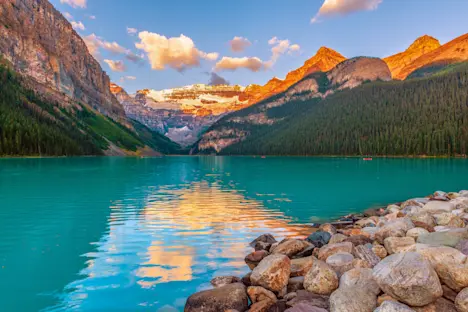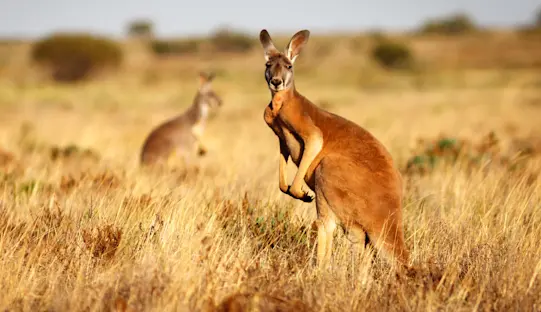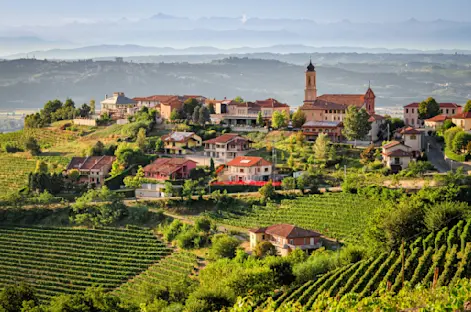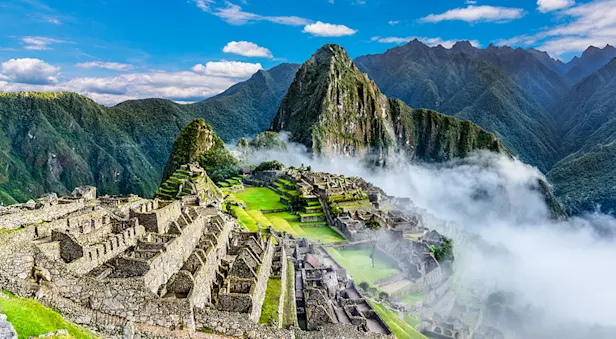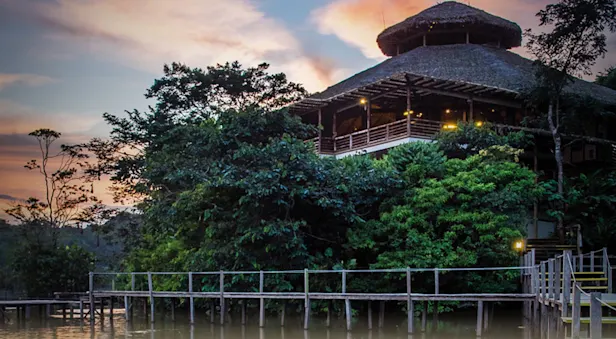M/C Tip Top II Western Itinerary

Upon arrival at the airport in Quito, you are met by our local representative and transferred to the historic Old Town city center about an hour away. Settle into your boutique hotel in the heart of the colonial quarter and enjoy dinner on your own this evening.

With your Expedition Leader at the helm, embark on a full day of discovery in Ecuador’s capital. Heralded as Latin America's best-preserved colonial city, Quito's Old Town is a UNESCO World Heritage Site filled with cobblestone lanes, elegant plazas and monuments, and ornate gilded churches. On a guided tour, take in a panorama of the city and surrounding volcanic peaks, visit the 16th-century Church and Convent of San Francisco, and wander through San Francisco Square. Marvel at the baroque splendor of La Compañia Church with its gleaming gold-leaf interior, and survey Independence Plaza, the original center of Quito from which we view the Archbishop's Palace, Cathedral and Presidential Palace. We also visit an artisanal chocolate shop featuring products handmade from Ecuador's finest aromatic cacao. Ethically cultivated by a women's cooperative using traditional organic techniques, this rare cacao is prized by the great chocolatiers of the world for its heady aroma and unique flavor. We'll do a chocolate tasting, pairing different varieties with craft beer also made of cacao. Following lunch, the afternoon is at leisure to explore the city further on your own or visit the traditional workshops along La Ronda, one of Quito's oldest streets, where artisans craft everything from hats to wooden toys. This evening, we gather for a welcome dinner with one of our Expedition Leaders.
Rise early for our return transfer to Quito airport, where we board our flight to the Galapagos this morning, via Guayaquil. Our second Expedition Leader meets us as we land on the island of Baltra, then we transfer to the jetty to board our small ship,Tip Top II. This first-class motor catamaran will be our home base for the next week as we explore a diverse sampler of the islands. We're soon off for Mosquera Islet, with a wet landing on the shore following lunch. The islet is a reef of rocks and coral, created by a geological uprising, with an inviting white sand beach and tide pools. Observe colonies of sea lions, brown pelicans, blue-footed boobies and Sally light-foot crabs—the contrast between these bright orange crabs atop the black lava is striking. Back aboard Tip Top II, our Expedition Leaders offer a briefing about tomorrow's activities, followed by cocktails and dinner.
Our first landing is at Sullivan Bay on the east coast of nearby Santiago, known for its spectacular volcanic formations, relatively recent lava flows and unique geological scenery. The lava here is the pahoehoe type, which resembles smooth ropes. Few plants have been able to take root on the barren rock, and we admire the hardy pioneers that have, like the lava cactus. We will also have the opportunity to snorkel along this dramatic shoreline looking for reef fish.
Continue to Rabida Island where we have a wet landing on Rabida, going ashore to walk and observe marine iguanas, sea lions and brown pelicans. Just a short distance away on foot, we reach a small saltwater lagoon where we are likely to see some shorebirds. There's another chance to snorkel, too, and we follow the shoreline looking fro sea lions, crustaceans and reef fish.
This morning we awake at Fernandina, the youngest and most active volcano in the Galapagos, erupting most recently in 2018. The rippling pahoehoe lava at Punta Espinosa is a stark backdrop for the surprising variety of life that flourishes here: flightless cormorants nest on the rocks, Galapagos hawks soar overhead, sea lions sprawl on the beach, and huge colonies of marine iguanas bask in the sun. Bright orange Sally Lightfoot crabs pepper the black lava rocks at water's edge, a vivid counterpoint to the aquamarine sea. A snorkeling excursion offers a good chance to see sea turtles and submerged marine iguanas feeding on algae. Fernandina is home to a number of rare and unique Galapagos species such as the flightless cormorant, Galapagos penguin, Galapagos hawk and Galapagos snake, among others. We’ll also see fascinating lava cactus, which grows on young lava flows with virtually no water.
Following our visit to Fernandina, we will navigate for a couple of hours to reach the southern side of Isabela where Tip Top II enters Elizabeth Bay to explore a sprinkling of islets, a lagoon frequented by sea turtles, and surrounding red and black mangroves. On a panga ride, search for resting and feeding sea turtles along with lava herons, Galapagos penguins, rays and flightless cormorants.
Spend the morning at Urbina Bay to witness one of the best examples of geological uplift in the archipelago, a phenomenon that occurs when molten rock beneath the surface suddenly shifts. In 1954, the shoreline was heaved upward nearly 15 feet, exposing coral and stranding marine organisms above the water on what is now the shore. Urbina is home to nesting sea turtles and a colony of some of the islands' largest land iguanas. We also look for Galapagos tortoises and a variety of Darwin's finches.
Continue north to Tagus Cove for lunch where we find graffiti from the 1800s, when pirates and whalers carved their ship names into the rock above a historic anchorage. Look for flightless cormorants on the shoreline and Galapagos penguins below the surface as we snorkel. Then, choose between two activities: a hike among the volcanic tuff cones for a closer look at the island's geological history, with views of Darwin's Lagoon, or a panga ride to look for blue-footed boobies perched on the cliff ledges, as well as brown pelicans, brown noddies and flightless cormorants. We also have a chance to paddle a kayak along this scenic cove to admire the wildlife perched on the rocks at eye level.
At Puerto Egas on Santiago, one of the most volcanically active islands in the Galapagos, we make a morning landing on a black sand beach with eroded rock formations. The trail crosses the dry interior where remnants of a salt mining enterprise are still visible, then continues along the coast. Tide pools are home to a variety of marine life, including sea urchins, octopus, sponges and sea stars. Birdlife abounds, with great blue herons, lava herons, oystercatchers, yellow-crowned night herons, Galapagos doves, finches, mockingbirds and seasonal shorebirds. In the lava grottos we find a colony of Galapagos fur seals, one of the only places in the islands where these endemic animals are on view from land. After our walk, there may be time to swim or snorkel off the beach with the resident sea lions, and we may also see turtles, rays and reef sharks.
Tip Top II continues navigating to Bartolome where we climb to the island's highest point for 360° views. Along the path, we pass intriguing geological formations including spatter cones, tuff cones and lava tubes. From the summit, a panorama unfolds of the surrounding islands and Pinnacle Rock, famously shown in the 2003 film Master and Commander. Some of the best snorkeling in the Galapagos awaits around the base of this ancient submerged volcano. It's an underwater playground that's home to huge schools of fish permanently under attack by Galapagos penguins. Gentle white-tipped reef sharks, sea turtles and stingrays are also common sightings.
Make a wet landing this morning on Sombrero Chino, which really does look like a Chinese hat! On this small island off the coast of Santiago, we see many creatures on the rocky shoreline and in the water, including Galapagos penguins, eagle rays, sea lions and marine iguanas. This is an excellent snorkeling site, and there's time to explore the undersea as well as to swim or kayak. After lunch back aboard our ship, make a dry landing on Dragon Hill to observe land iguanas. We'll walk to a hypersalinic lagoon (saltier than the ocean), where we may observe flamingos, common stilts, pintail ducks and other bird species.
On Santa Cruz this morning, we begin in Puerto Ayora, the island's main town, to visit the world-famous giant tortoise-rearing center run in tandem by Galapagos National Park and the Charles Darwin Research Station. Here, international scientists conduct research dedicated to conserving the unique habitats and species of the Galapagos. At the facility, visit the protection pens where hatchlings are bred to help increase depleted tortoise populations, a central mission for both the research station and the national park. To date, more than 5,000 tortoises bred at the station have been released into the wild.
After some free time to explore town, followed by lunch back on board the Tip Top II, we leave the ship behind to drive into the misty highlands of Santa Cruz where Nat Hab's private Tortoise Camp awaits. This exclusive setting offers a rare opportunity to spend a night in wild tortoise habitat, and these ancient, gentle reptiles that are the archipelago's namesake often wander right through camp. Accommodations are in safari-style raised platform tents and charming treehouses with views of the ocean. While rustic, they offer comfortable amenities, including real beds and private en suite facilities. But the true treat of a stay here is our proximity to wild tortoises, which are attracted to the area's lush vegetation. They are most commonly seen in camp from July through February. From March to June, we make an excursion to a nearby tortoise reserve for closer views, as the animals migrate seasonally to a lower elevation.
Please note: At times, Tortoise Camp may be closed due to poor weather conditions, in which case we will remain aboard Tip Top II for the night, though all sightseeing inclusions will remain the same.
Waking up in the peaceful highland environs of Tortoise Camp, we realize our time in the Enchanted Isles is coming to a close all too soon. Descend the mountainside by van to reach our vessel, then cruise aboard Tip Top II one last time as we return to Baltra and say goodbye to the ship, her crew and our Expedition Leaders. From Baltra, we board our flight back to the mainland. Upon arrival at the Quito airport, transfer to our nearby hotel, just minutes away, where an overnight stay is included. A complimentary shuttle will return you to the airport for your homeward flight.
Our goal is to provide you with an exceptional, life-enhancing adventure. To achieve that goal, our Expedition Leaders are empowered to make reasonable changes to itineraries while a trip is underway. These decisions might be made to more closely follow the movements of wildlife, to accommodate extreme weather, to take advantage of unexpected opportunities, or generally to improve overall guest experience. For this reason, the above itinerary should be considered a general outline of your trip, but it is subject to change. After all, the very definition of adventure is “an exciting experience or undertaking involving the unknown.” In addition, weather conditions in the Galapagos can change without notice and will dictate where and when we can travel. Please be aware that we may adapt our schedule to take advantage of these changes, and local conditions, inclement weather or Galapagos regulations may prevent us from participating in any part of this itinerary, including the optional Tortoise Camp excursion.






